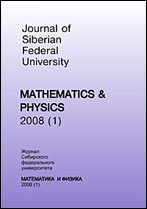|
|
Journal of Siberian Federal University. Mathematics & Physics, 2015, Volume 8, Issue 2, Pages 217–223
(Mi jsfu424)
|
 |
|
 |
Interaction quality in human-human conversations: problems and possible solutions
Anastasiia V. Spirinaa, Eugene S. Semenkina, Alexander Schmittb, Wolfgang Minkerb
a Institute of Computer Science and Telecommunications,
Siberian State Aerospace University, Krasnoyarskiy Rabochiy, 31, Krasnoyarsk, 660014, Russia
b Institute of Communications Engineering, Ulm University,
Albert Einstein-Allee, 43, Ulm, 89081, Germany
Abstract:
Speech analysis nowadays is widespread. One of its applications is designing Spoken Dialogue Systems, which allow users to interact with computer systems using natural spoken language. The Interaction Quality is a quality metric, which is used in this field to evaluate the quality of interaction between computer and human. It is based on various speech features. The aim of the Interaction Quality model design is to improve Spoken Dialogue Systems by introducing information about Interaction Quality into Spoken Dialogue Modeling. There exists some state-of-the-art related to the Interaction Quality in spoken human-computer communication. In turn, measuring the Interaction Quality for human-human conversation reveals to be an increasingly difficult task. Different types of dialogue exist and for each type the Interaction Quality measure has a different meaning. Furthermore, a specific data corpus is required for modeling the Interaction Quality for each type of dialogue. We describe the idea of developing software tool for semi-automatic dialogue corpus generation, which can help to keep the time for preparing corpora. The Interaction Quality models for human-human conversations can be used for improving Spoken Dialogue Systems in terms of flexibility, human-likeness and user-friendliness. What is more, the results of the Interaction Quality modeling can be useful in the field of manned space exploration for developing systems for automatic monitoring the conditions of the crew of a spaceship, especially for long interplanetary flights. Further development of the work on the Interaction Quality modeling will help to track automatically relationship between crew members on the basis of their speech.
Keywords:
interaction quality, human-human conversation, speech analysis, speech/spoken corpus.
Received: 10.01.2015
Received in revised form: 25.02.2015
Accepted: 23.03.2015
Citation:
Anastasiia V. Spirina, Eugene S. Semenkin, Alexander Schmitt, Wolfgang Minker, “Interaction quality in human-human conversations: problems and possible solutions”, J. Sib. Fed. Univ. Math. Phys., 8:2 (2015), 217–223
Linking options:
https://www.mathnet.ru/eng/jsfu424 https://www.mathnet.ru/eng/jsfu/v8/i2/p217
|

| Statistics & downloads: |
| Abstract page: | 513 | | Full-text PDF : | 64 | | References: | 38 |
|




 Contact us:
Contact us: Terms of Use
Terms of Use
 Registration to the website
Registration to the website Logotypes
Logotypes








 Citation in format
Citation in format 